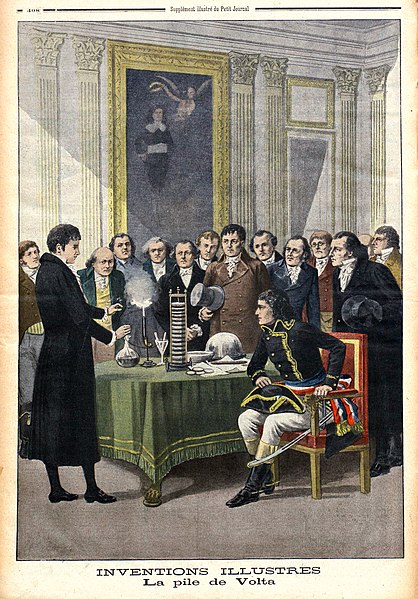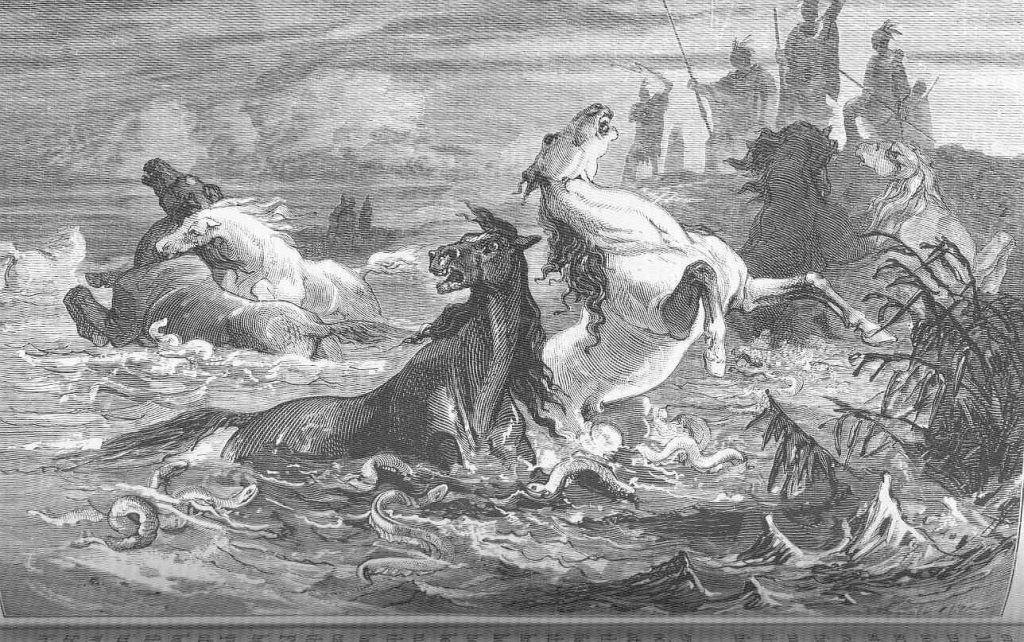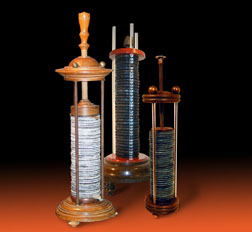
February 18, 1745, is the birthday of the great Italian physicist Alessandro Volta (1745-1827), credited with what many consider to be the most important invention in the history of electricity: the voltaic pile, or more commonly known today as the battery.
“Volta’s Pile was the first battery capable of producing a continuous electric current. Virtually every electric invention of the 19th century (and there were many!) was directly dependent on it, which is why I call it the most important invention in the history of electricity.” –The Untold Story of the Telegraph, John D. Jenkins
The ability to convert chemical energy into continuous electricity was a definite game changer, and Volta deserves a lot of credit for his groundbreaking invention. Yet, we at SPARK love and marvel at the fact that the model for Volta’s clever invention was inspired by one of nature’s most shockingly strange and fascinating creations: the electric eel.
The electrophorus electricus is the most well-known species of electric eel, which only looks like an eel, but is in fact a type of knife fish and lives in fresh water, most notably in the murky pools and calmer portions running down the Amazon River through South America. They get 80% of their oxygen from above water, rising to the surface to gulp a mouthful of air 4 or 5 times an hour.
They average between 6-8 feet in length and can weigh as much as 50 pounds with most of their size and weight consisting of 3 pairs of electricity-creating organs, and can produce over 600 volts, about 5 times the voltage coming out of a wall socket.
That’s what they say.
When the eel is fully submerged it creates an electrical current that stuns and even kills small targets like fish, crabs, even birds. It’s interesting to note that the esteemed Michael Faraday only experienced mild shocks when, during his experiments in 1838, he literally handled a live specimen, submerged in a tank of water.
“When one hand was in the water the shock was felt in that hand only, whatever part of the fish it was applied to; it was not very strong, and it was only in the part immersed in water.”
Water is an excellent conductor and since the fish is completely submerged, the electric charge radiates everywhere, weakening the overall effect, yet plenty strong enough for handling smaller predators and prey (certainly smaller than Faraday).
Here’s where things get—at least for some people—unbelievable. Because electric eels don’t have any teeth (they swallow their prey whole), they can’t bite you, but they can sure shock you, and in more ways than one.

In 1800—the same year Volta presented his battery invention to the Royal Society in London—the German naturalist and explorer, Alexander von Humboldt (1769-1859) documented an episode of electrical phenomena that seemed to defy the laws of nature.
While exploring the Amazon River, Humboldt witnessed something called “horse fishing”. He watched in amazement as local fishermen drove 30 horses and mules into a pool of electric eels, who in an ultimate act of aggression, would literally hurl themselves out of the water—nearly their entire length–while shocking the living-daylights out of the terrified, stampeding horses.
(When the fish jumps out of the water it creates a short circuit with nowhere else for the charge to go but the point of contact. Creating a concentrated jolt to oversized predators.)
Imagine the chaos as the horses jumped and trampled on the eels who repeatedly leaped out of the water, stunning the horses—a few of which drowned. After a few frantic minutes the eels would run out of electricity, and the fisherman would safely reach into the shallow water and grab the harmless and exhausted fish.
At about the same time and on the other side of the planet, Alessandro Volta was showing how he could emulate the electric eel’s ability to chemically produce and store electricity.
There is no other way to say it: the electric eel is a living battery. It has a positive pole at its head and the negative one at its tail. Their primary organs are made up of flat cells that are grouped on top of each other. These cells are stacked in long rows with fluid-filled spaces between them. The fluid acts as an electrolyte, acting as the ‘syrup’ connecting the entire stack of ‘pancakes’ turned on its side.

When comparing the cells of an electric eel and the plates of the voltaic pile similarities are obvious, and inspiring. Volta was able to synthetically emulate nature’s ability to create, store and discharge electricity.
In 1799, Alessandro Volta fashioned a two-foot-tall stack of zinc & silver discs, separated by salt-soaked cardboard. This “voltaic pile” was the world’s first human-made battery, allowing us to artificially create, store and distribute continuous electrical energy. From the battery in your car or flashlight to the voltaic pile and the electric eel, it’s all the same idea.
Happy birthday Alessandro Volta. Thank you for sharing your world-changing invention, and reminding us that inspiration can come from anywhere–even from a slippery, slimy, creepy, disgusting fish that can shock you senseless.
